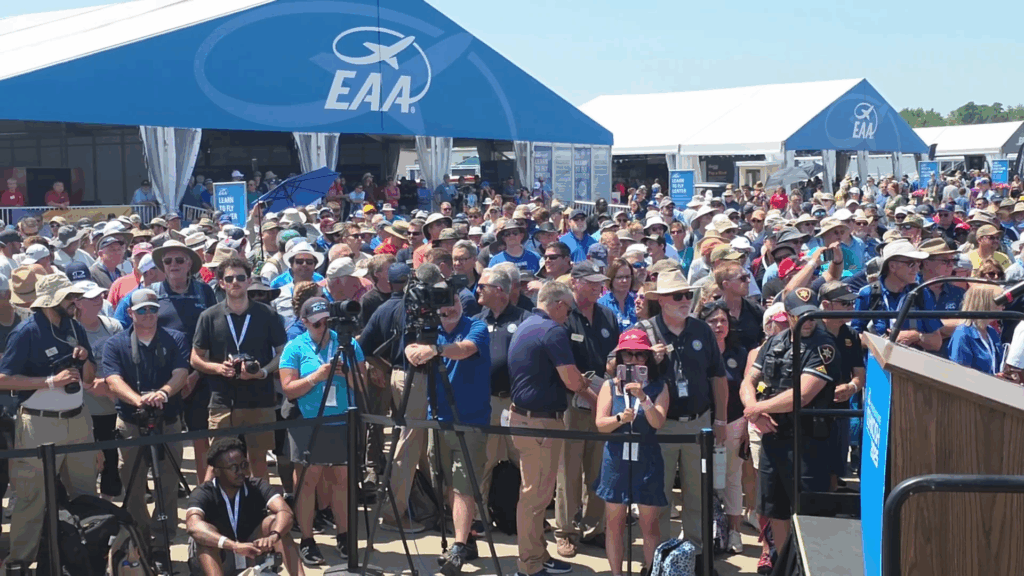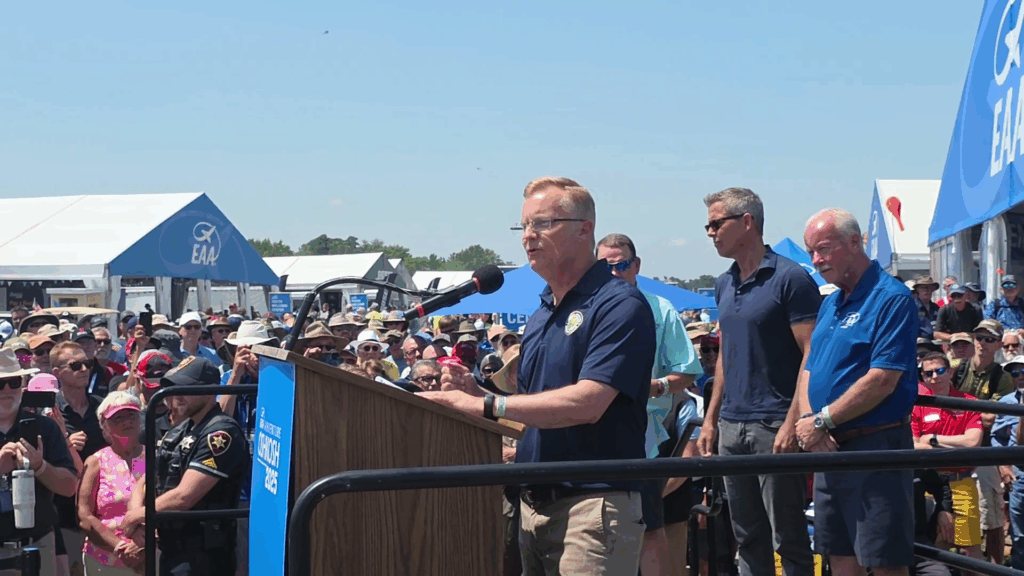By: Rex Alexander, AG Infrastructure Ambassador
On June 6th, 2025, President Donald Trump issued his Executive Order, “Unleashing American Drone Dominance,” in an attempt to restore American leadership in uncrewed aircraft systems (UAS), advanced air mobility (AAM), and electric vertical takeoff and landing (eVTOL) technologies around the globe. As someone actively engaged in this market, having spent the better part of four decades in the aviation industry, I applaud this effort. That said, to achieve the lofty goals listed in the timelines outlined, a significant change in how the government engages with industry must first occur.
The Dream Disconnect
Over the past few years, the aviation industry has observed a troubling decline in collaboration and involvement between industry and government agencies such as the Federal Aviation Administration (FAA), Department of Transportation (DoT), National Transportation Safety Board (NTSB), the Department of Defense (DoD) and NASA, specifically in their participation in industry meetings, workshops and conferences, in person and virtually, despite these venues being vital to advancing aviation safety and technological innovation in the United States and around the globe. (See prior AG coverage about the lack of USG involvement in standards bodies).
Numerous colleagues who work at many of the aforementioned government agencies, who wish to remain anonymous, have shared with me their frustrations with this lack of engagement. I’ve been told that it stems from internal directives from their leadership that restrict staff members from sharing information with external stakeholders or participating in industry events. These restrictions apply regardless of whether attendance is official or in a personal capacity, and whether the event is held in person or online.
I have personally experienced the negative impact these restrictions have had during three major industry events in 2025: the Vertical Aviation International’s Verticon conference in Dallas, Texas (March), the Vertical Flight Society’s (VFS) 81st Annual Forum in Virginia Beach, Virginia (May), and the 19th annual Electric Aircraft Symposium in Oshkosh, Wisconsin. At each event, on behalf of the aviation industry, I organized a number of panel discussions and workshops focused on policy development to support the United States’ leadership in advancing AAM, promoting harmonized technology adoption, and informing future research.
Understanding the need for proper coordination, I submitted formal requests for Subject Matter Expert (SME) involvement from the government several months in advance, which included letters directed to the appropriate agency leadership and managers. However, while the individuals identified were eager to participate, nearly all were denied permission by their superiors. In some cases, agency leaders waited until the week prior to the event to decline the request.
Officials from the VFS estimate that nearly 200 attendees from the government, who would have normally attended the organization’s Forum event this year, were not allowed to participate.
A Proven Recipe for Success
Having planned and orchestrated numerous and highly successful industry and government collaborative forums, symposiums, and workshops over the past several years, I, along with other industry stakeholders, have identified what works…and what doesn’t. One of the key elements to success when orchestrating an industry–government meeting is to ensure that you have the right subject matter experts (SMEs) from all of the different lines of business from within the regulatory agencies sitting at the table with industry. Why? Because there is no single line of business in government that can say yes to a proposal, as any proposal will ultimately impact multiple lines of business, and as such, each line of business must agree with the other regarding the premise and implementation of the proposal.
This became glaringly evident during a 2013 symposium I helped orchestrate for the U.S. Helicopter Safety Team (USHST) to advance the then Helicopter EMS (HEMS) Weather Tool within the FAA. The HEMS Weather Tool had been languishing on life support since its inception in 2006 due to this very issue. During the meeting, after a short discussion with one of his fellow FAA colleagues, a close friend from the FAA said, “That 10-minute discussion (with one of his FAA colleagues) was worth the price of admission.” I replied, “What do you mean? You both work across the hall from each other in the same building.” He explained, “You don’t understand, I can have that conversation here. I can’t have that conversation there.”
This one comment then became the inspiration for the two key ingredients I have used for every successful event involving government agencies that I have planned since:
- Identify and invite the correct SMEs from each line of business in government, which can take upwards of 6-12 months.
- Provide a forum that allows for unfettered and honest discussion to occur between the Industry and the FAA.
If there is one thing that I have learned over the years, it is that government agencies put the **sigh** in “Silo” (think: exasperating stovepipes!) If you can move an individual outside of their agency, it breaks down these silos and jumpstarts progress in timelines that can be measured in months, instead of decades.

Awareness and Hope
There is a glimmer of hope on the horizon, but only if our government leaders heed their own words. While attending the Experimental Aircraft Association (EAA) AirVenture airshow in Oshkosh, Wisconsin, this year, I was present for the announcement by U.S. Transportation Secretary Sean Duffy regarding the FAA’s MOSAIC rule modernizing the Light-Sport Aircraft industry. While much of the press briefing centered around the rule itself, Secretary Duffy made some very keen observations and powerful statements about the aviation industry and the role of government. He referred to the new MOSAIC rule as the “unleashing of American ingenuity,” and stated that “Our recreational pilots and plane manufacturers have correctly noted outdated regulations were inhibiting innovation and safety.”
Duffy went on to say, “The best ideas do not come from DOT. The best ideas don’t come from the FAA. The best ideas come from all of you (pointing to the crowd of aviation enthusiasts in attendance) and how we can do a better job.”
He continued, “And I would just tell you all, we have an open door. And if you have great ideas on what we can do differently, what we can do better, that’s going to drive innovation and drive safety. We are all ears. The mission of government should not be to hold back and have so many burdensome rules and regulations that don’t allow those innovators to innovate and drive your safety while you’re in the air. For too long, our rules have been outdated, holding back our pilots, our builders, and our innovators.” (Can I hear an AMEN!)
Secretary Duffy was then followed by the FAA Administrator Bryan Bedford, who said, “Safety is a team sport. It depends on collaboration across the FAA, across industry, and, of course, the aviation users themselves. I’m inspired by the collective effort I see here every day at AirVenture, and I see MOSAIC as one of those prime examples of what we can do together when we get in that room and work it out.”

Excellent observation, now can we just get the FAA into the same room???
What’s Urgently Needed
As Secretary Duffy pointed out at AirVenture, to realize the full potential of President Trump’s EO, which aims to restore American leadership in UAS, AAM, and eVTOL technologies, it is imperative that government agencies be directed to actively partner and engage with industry where they are, e.g., forums, symposiums, and workshops–not where the government is. Without open dialogue and collaboration between industry and government SMEs, the success of these strategic initiatives and our nation’s standing in global aviation will be severely undermined. We as a nation will fail to be the leader we espouse to be.
To make good on Secretary Duffy’s promises and to make President Trump’s Executive Order a reality, this administration must issue a clear directive to all of the leadership and managers within the FAA, DOT, NTSB, NASA, and DOD to aggressively reestablish full engagement between their SMEs and those of the aviation industry and go where they are, and attend their workshops and forums. Otherwise, we regress…not restore.

